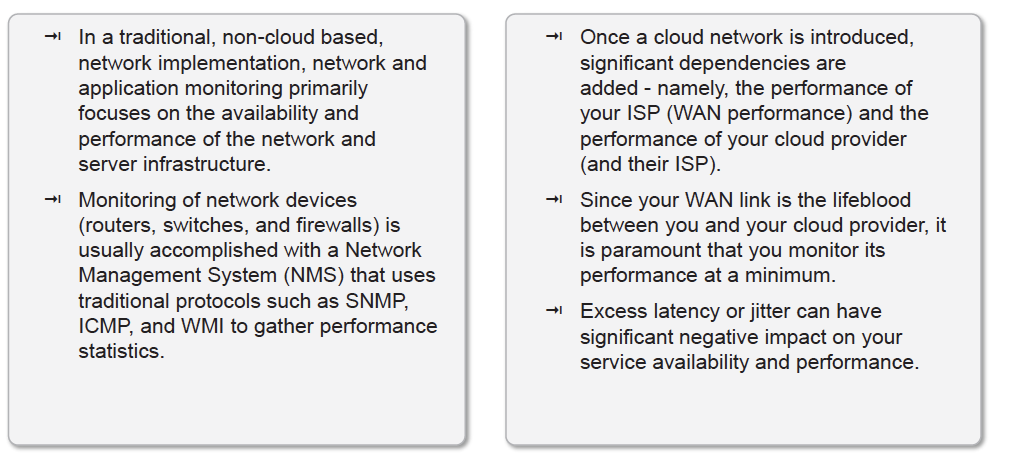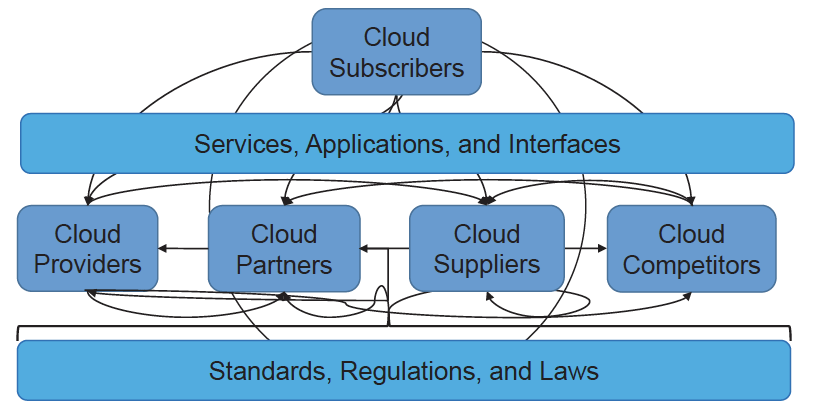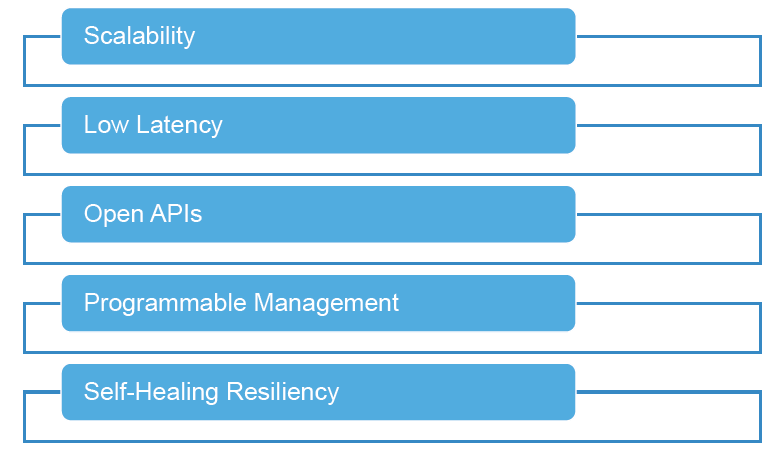Knowledge Byte: Network Management in the Cloud

Cloud Credential Council (CCC)

Cloud computing has brought considerable changes in the approach to network management. Here are few points depicting the differences between traditional network management and cloud network management.

Cloud Computing Network Ecosystem
In the cloud, the management stack must take its focus off the infrastructure itself and concentrate on the performance level that a given application needs. One of the reasons the cloud is so intimidating is that it requires a great amount of trust.
The following figure illustrates the complexity of the cloud network ecosystems.

Cloud computing, by definition, is a complex ecosystem of services, applications, and interfaces — all of which require a focus on performance, security, and regulatory compliance.
Traditionally, computing infrastructure has been a substantial burden for companies. But, what happens when business is unchained from their physical infrastructure and allowed to focus on business goals? The model of infrastructure as a service and cloud computing bring us closer to this possibility. The myriad of services now available over the Internet rely on data centers spread around the world.
Currently, the business value chain in a cloud ecosystem is shared among the following actors:
● Cloud providers: Provide virtual and/or physical computing capability, storage, communication facilities, API, and/or application resources to cloud service users.
● Cloud partners: Provide services that interact or work within the cloud service for either subscriber or provider use.
● Cloud suppliers: Provide resources, supply hardware, connectivity, and/or basic software to the cloud service providers.
● Cloud competitors: In some cases, these may provide a portion of the core service or may be interconnected through the subscriber as part of the cloud ecosystem.
● Cloud subscriber: Consumes services, builds platforms, applications for internal consumption as well as for reselling as a cloud service provider.
Key Attributes of Cloud Networking
Servers, storage, and networks form the anchors of today’s IT infrastructure. Companies around the world are constantly seeking to enhance this infrastructure. Some key attributes to be considered when using or evaluating cloud networks are as given:

Courses to help you get
results with Cloud
Sorry, we couldn't find any posts. Please try a different search.
Never miss an interesting article
Get our latest news, tutorials, guides, tips & deals delivered to your inbox.
Keep learning



